The pursuit of beauty is human nature. Beauty is not only a reflection of the mind, but also a reflection of the interest in life. Tang Dynasty women are the best representatives of beauty, because they inherited the mentality of "Dress up for those who like or admire yourself (女为悦己者容)" from ancient times, and pushed the beauty ideal realm to the highest level under the booming economy and the open and tolerant social atmosphere.
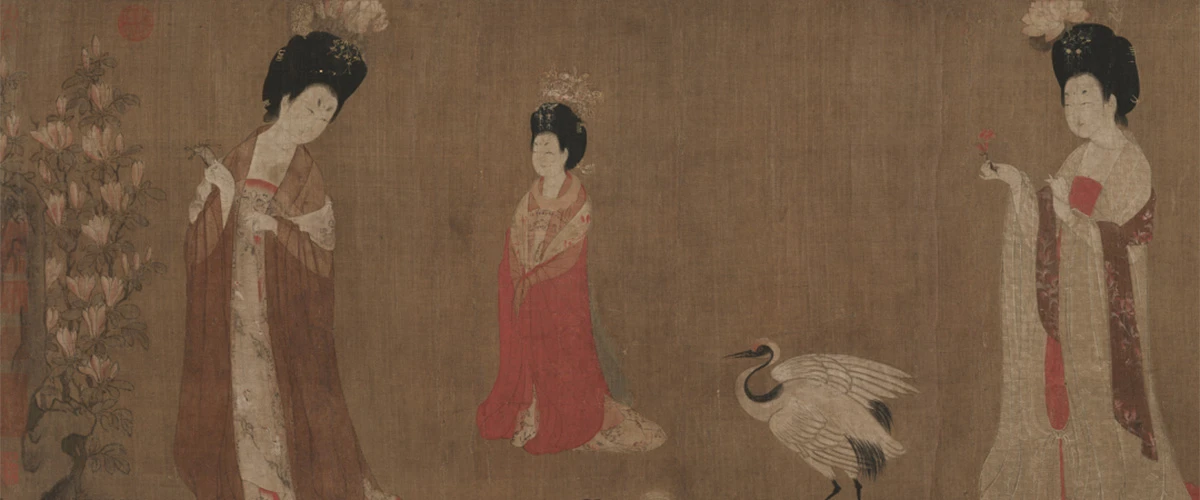
Court Ladies Adorning Their Hair With Flowers
Lively, dignified, noble, the endless types of Tang Dynasty female hairstyles, paired with exquisite makeup, made many literati and scholars unstinting in their talent to depict the Tang women's style. Let's follow ArtMoment to go back thousands of years ago, and enjoy the beauty of Tang female hairstyles in that remarkable era of spiritedness.
Ancient Hairstyle Tips
What are Ji and Huan?
The ancient Chinese women's hairstyle is commonly known as Ji Huan (髻鬟, jì huán), and according to the method of combing, there are two types of Ji (髻, jì) and Huan (鬟, huán).
- Ji, solid hair bun, suitable for ordinary women;
- Huan, ring-shaped hair bun, suitable for young girls.
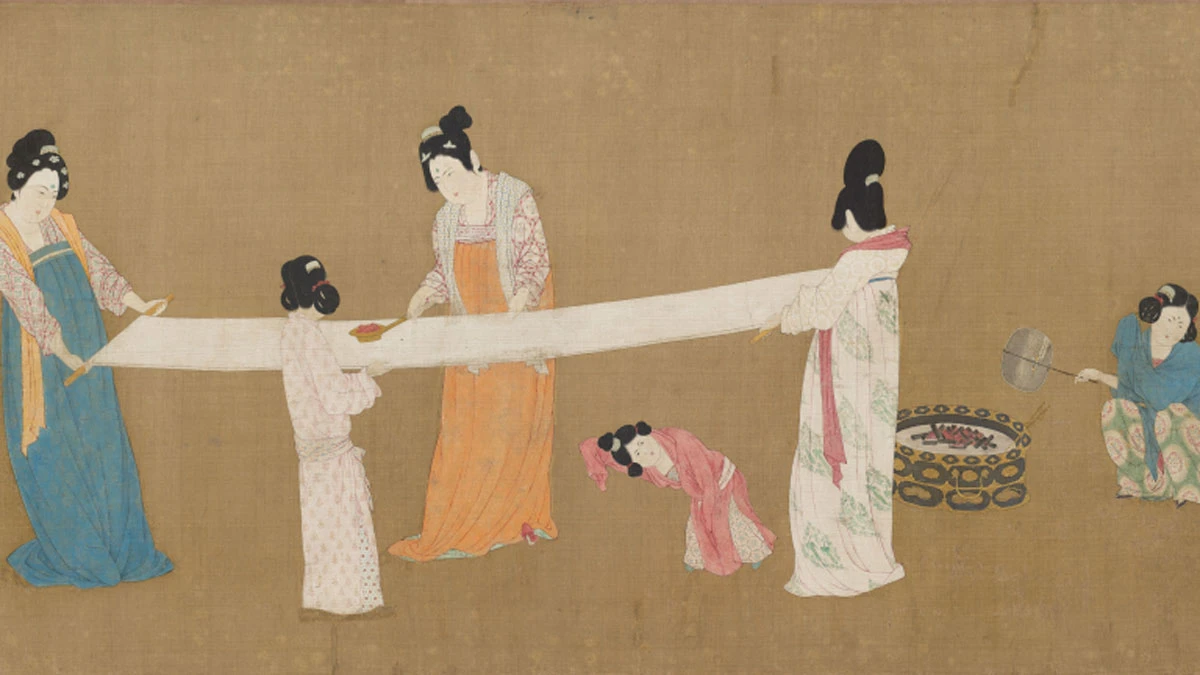
Court Ladies Preparing Newly Woven Silk
What does the change of hairstyle mean?
In ancient China, a woman's hairstyle changed with her age and stage of life. When we view ancient paintings, or visit female figurines or tomb paintings in museums, we can determine their approximate age and marriage based on their different hairstyles.
Childhood
When a girl's hair becomes abundant as a child, the hair on the top of her head will be divided into two buns and knotted into two bullhorns, so it is also called "Zong Jiao (总角, zǒng jiǎo)" or "Zong Ji (总髻, zǒng jì)".
The hairstyle of girls who have not yet reached adulthood does not vary much, but is mostly "Guan Fa (丱发, guàn fà)" or a draped bun around the ears.
Teenage
After girls finished their childhood, they would weave their hair into a bun on the left and right sides respectively, which is lively and cute.
The hairstyle is shaped like the Chinese word "丫 (yā)", so it is also called Ya Ji (丫髻, yā jì), or Ya Tou (丫头, yā tou). Until modern times, some Chinese elders would call girls "Ya Tou" as a nickname. Most of the girls who wear this bun style are in their teens.
Adulthood
In ancient China, when a woman reaches adulthood, she has to accept the rite of maturity, Ji Li (笄礼, jī lǐ), which means being allowed to get married. On the day of marriage, to perform the rite of Jie Fa (结发礼, jié fà lǐ), and after the marriage can no longer comb the Ya Ji, but ancient young woman's bun style.
Part I - Early Tang Dynasty Female Hairstyles
In the early Tang Dynasty, most of the women's hairstyle is still following the style of the previous Sui Dynasty. In the early Tang painter Yan Liben's painting "Emperor Taizong Receiving the Tibetan Envoy", we see the hairstyle of the court lady, which is a common style in the Sui Dynasty.
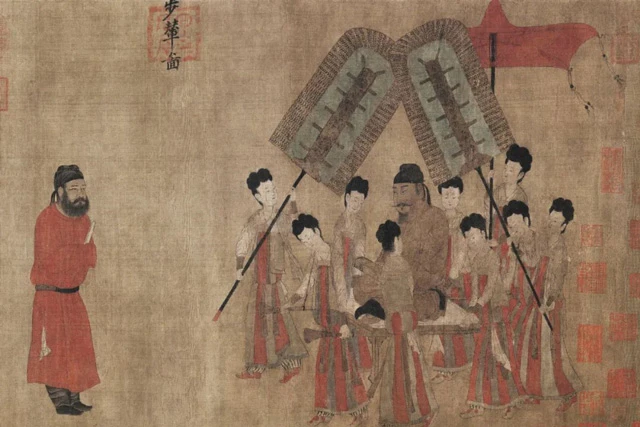
Emperor Taizong Receiving the Tibetan Envoy
Later, Tang Dynasty women developed their own fashion, gradually wearing high buns for the mainstream, even the emperor Taizong asked why women love to wear high buns.
From the unearthed cultural relics in the early Tang Dynasty, there were many female hairstyles at this time, both low and high bun, and single and double bun, but still the high bun or is the main, mainly the following kinds.
Ban Fan Ji
In the early Tang Dynasty, the court lady liked to comb Ban Fan Ji (半翻髻, bàn fān jì), it is the evolution of the bun hair from the Sui Dynasty. The combing method of Ban Fan Ji is from the bottom to the top, and turn over at the top.
The characteristics of this bun are towering and inclined to one side, like a flipped lotus leaf from the side view. From the records of Tang Dynasty literature, we can find that the Ban Fan Ji was very popular at that time.
Luo Ji
It was not only the history of the previous dynasties that influenced the hairstyle of Tang women, but also Buddhism.
Luo Ji (螺髻, luó jì) was originally a form of hair bun on top of Buddha, but later the folk began to imitate this kind of hairstyle characteristics, because the shape looks similar to the conch shell, so the name Luo Ji. The combing method is to use a single strand of bun hair spiral coiled, because of its different forms, which can be divided into single Luo Ji (单螺髻) and double Luo Ji (双螺髻).
In addition to poems and books, Luo Ji also appears in a large number of excavated cultural relics, and the mural painting of the Qianling Mausoleum is a vivid representative.
Jing Hu Ji
Beauty comes from nature, and sometimes cute animals can be the inspiration for Tang Dynasty hairstyles, such as the Jing Hu Ji (惊鹄髻, jīng hú jì).
The Jing Hu Ji was developed from the bun of the Wei and Jin dynasties, was modeled after the wings of a bird, and was combed in the form of a bird's wings, as if the bird was frightened and ready to fly.
The hair is combed to the top of the head, and then tied with a headband after it has been coiled into the shape of a bird's wings. In the past, the hair was combed with real hair, but later there was a more convenient way, wearing a pre-made fake bun on top of the basic bun.
Part II - Female Hairstyles During the Heyday of Tang Dynasty
The Kaiyuan and Tianbao periods were the heydays of the Tang Dynasty. The economy was booming and society was prosperous. The high bun, which was popular at the beginning of the Tang Dynasty, reached a peak at this time.
The open and tolerant culture led to frequent exchanges between various ethnic groups, and the hairstyle of Han women added elements of ethnic minorities and evolved on this basis. At this time, the hairstyle of Tang women changed from the simplicity of the early Tang Dynasty and added many accessories.
Wo Duo Ji
With the affluence and stability of life, the aesthetic style of richness as beauty was gradually formed, rounded cheeks and the Wo Duo Ji (倭堕髻, wō duò jì) with double sideburns holding the face were sought after by women.
It is characterized by the shape of hair into a bun, on the side from the top of the head and hanging bun, the shape of the bun as if to fall down. In fact, this bun style appeared as early as the Han and Wei periods, and continues to evolve. With the development of popular, the top bun gradually shrunk, hair outward combing swept more and more fluffy exaggerated.
Shuang Huan Wang Xian Ji
The most fairy hairstyle - Shuang Huan Wang Xian Ji (双鬟望仙髻, shuāng huán wàng xiān jì), which is a high bun during the Kaiyuan period.
The hollow bun gives a sense of lightness and movement, which is quite immortal. This bun style of combing change is to separate the hair from the middle of the head, respectively, each tie a knot, and then the excess hair coiled into a ring, and finally the tips of the hair into the hair behind the ears.
Yi Ji
In ancient China, women had long hair as a standard of beauty, but women with short and thin hair could also rely on the Yi Ji (义髻, yì jì, buns made of wigs) to create the perfect hairstyle.
It is made of metal wire or wood to make a frame or various bun styles, and then painted with black lacquer or fabric from the outside. The emergence of the Yi Ji makes the bun more fluffy and towering, Yang Guifei especially likes to comb with Yi Ji.
Part III - Women's hairstyles in the middle and late Tang Dynasty
The popularity of the high bun can be said to be throughout the Tang Dynasty, due to the ruling class's extravagant, the late Tang women's make up more opulent, and gradually began to advocate morbid beauty.
E Ji
The number of hairstyles for women in the Tang Dynasty can be described as the richest in history, as well as the height of hairstyles. The classic hairstyle of the Tang Dynasty, the E Ji (峨髻, é jì), was the most popular high bun among the noble women of the Tang Dynasty.
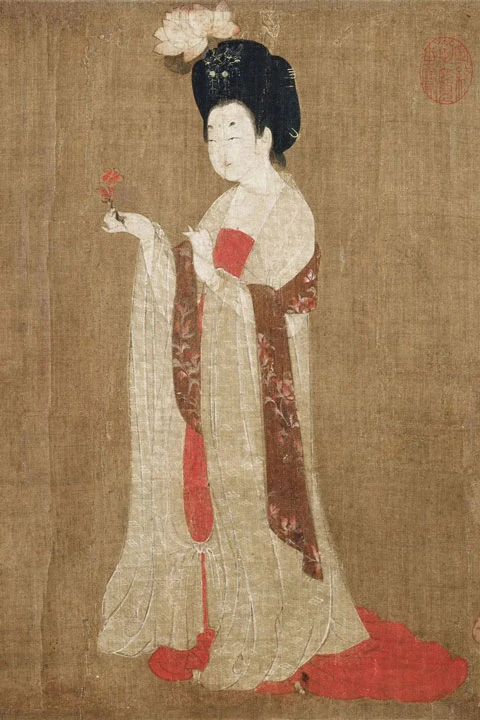
Court Ladies Adorning Their Hair With Flowers
The bun stood high on the head, like a steep mountain peak, and some could even reach one inch high. The bun was often decorated with hairpins, flowers or flower crowns, full of grace and elegance.
Duo Ma Ji
Duo Ma Ji (堕马髻, duò mǎ jì) is the most prominent bun in the Han Dynasty, the shape of the bun as if falling from a horse posture. In the Tianbao period, the Duo Ma Ji began to reappear and became popular again in the Zhengyuan period. In general, it was popular in the late Tang Dynasty for a long time.
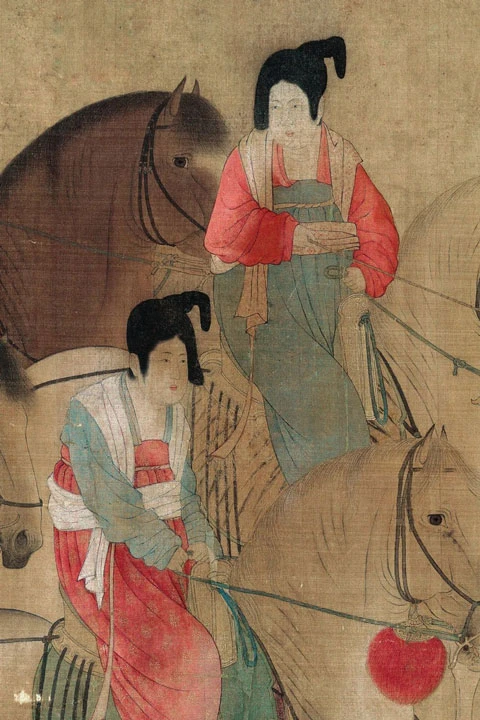
Lady Guoguo's Spring Outing
The Duo Ma Ji was worn by the aristocracy and the upper class at the time, and was seen in the painting "Lady Guoguo's Spring Outing" by the Tang painter Zhang Xuan.
Pao Jia Ji
The decline of the Tang dynasty in the middle and late periods was also reflected in the hairstyles of women.
In the time of emperor Xi Zong of the Tang Dynasty, the palace people combed a tight and convenient bun style, which was learned by local women when they fled for refuge, and this tight bun was called "Qiu Ji (囚髻, prisoner bun)".
The women in Chang'an city before the war at the end of the Tang Dynasty were combing their hair to the temples, putting a ring-shaped bun and a lot of hair on the back of the head, which was then called "Pao Jia Ji (抛家髻, pāo jiā jì)", and later people interpreted it as a sign that someone would abandon their homes during the war.
Dreaming of the Tang Dynasty, a once unprecedentedly powerful empire, countless generations of Chinese people with glory and dreams, remembering the bright and glorious time.
The beauty of the Tang Dynasty lies in the poetry, in the paintings, in the self-confidence of a great nation, and in the pursuit of the beauty of one thing in life. The women of the Tang Dynasty spent their lives interpreting their love for beauty, life, and life in their hairstyles.
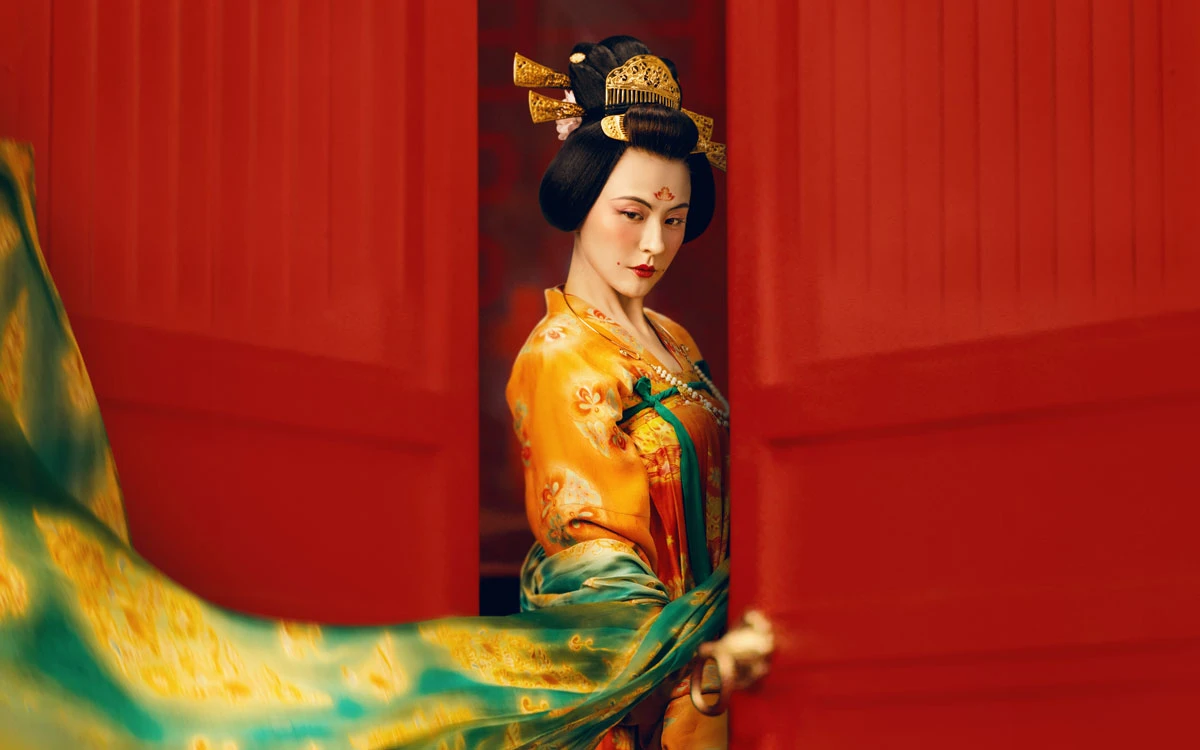
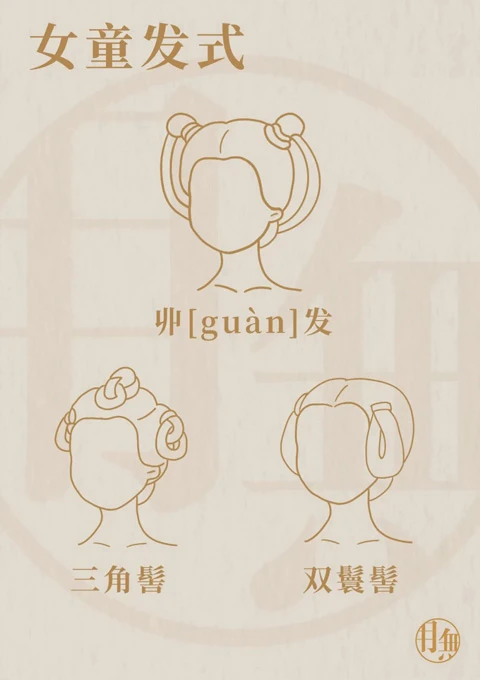
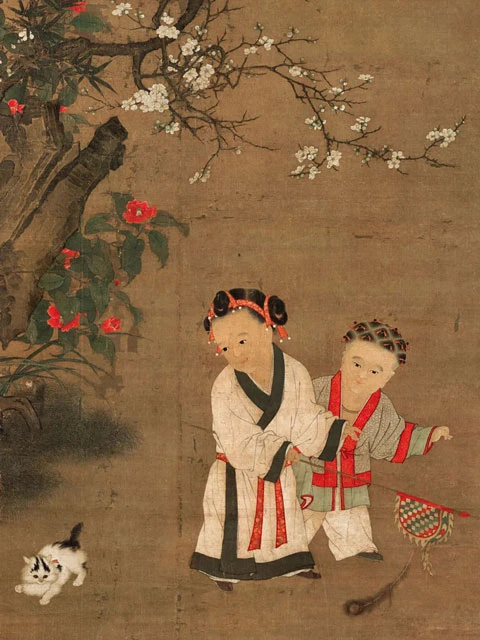
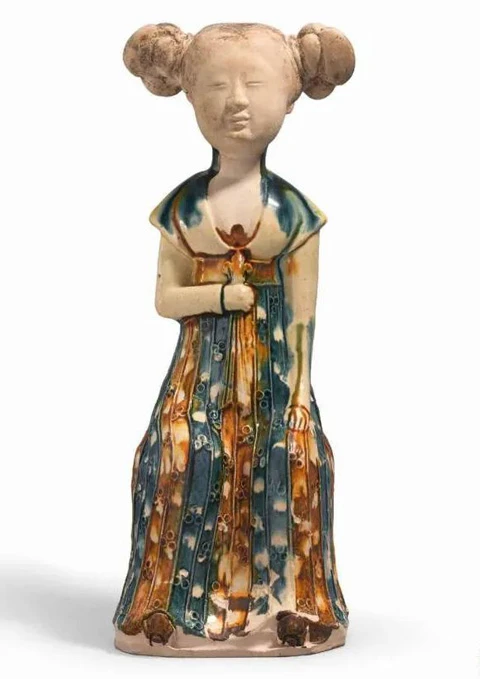
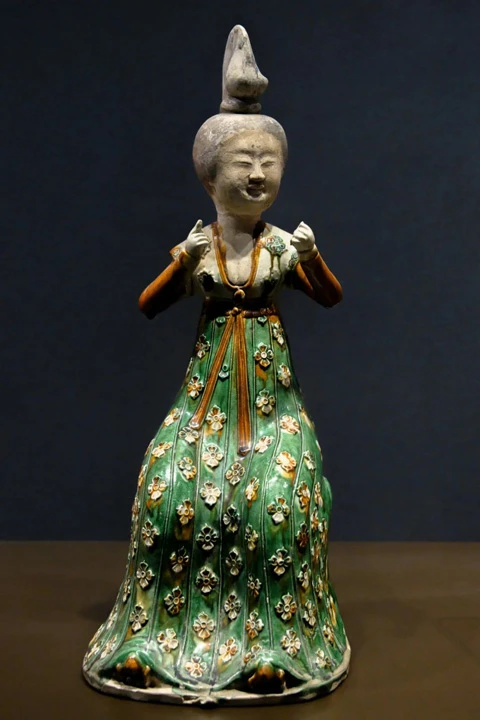
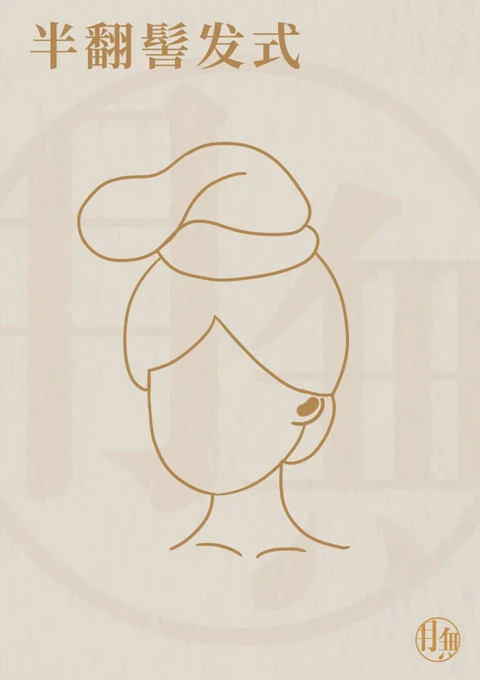
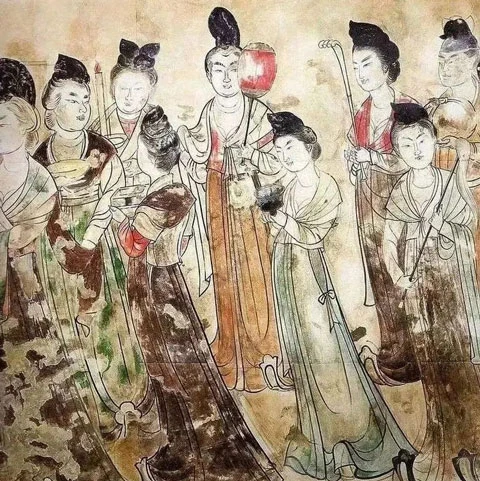
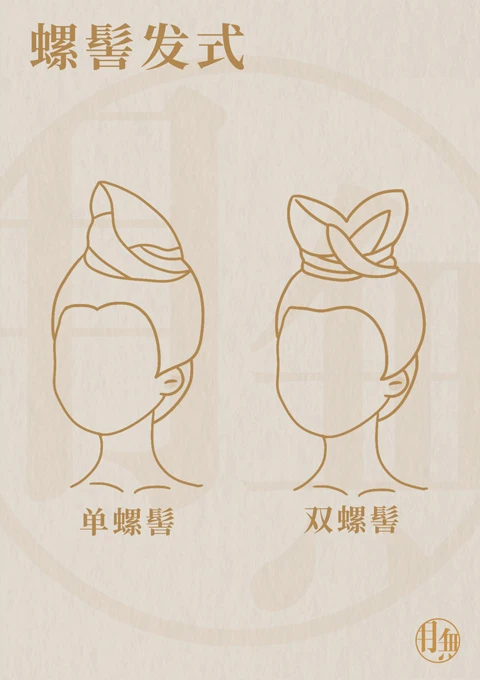
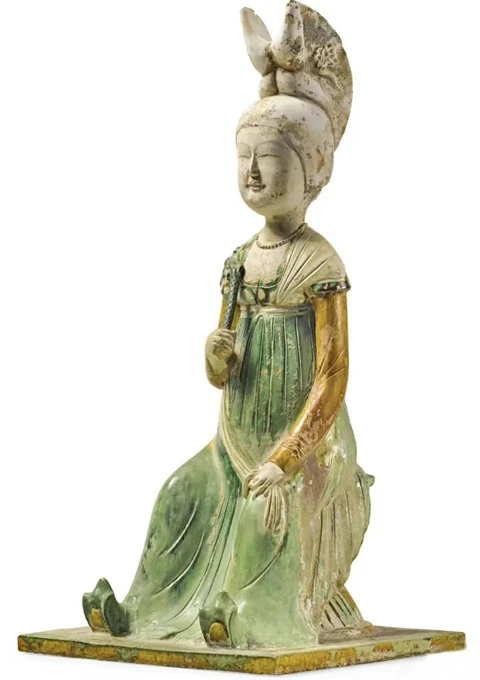
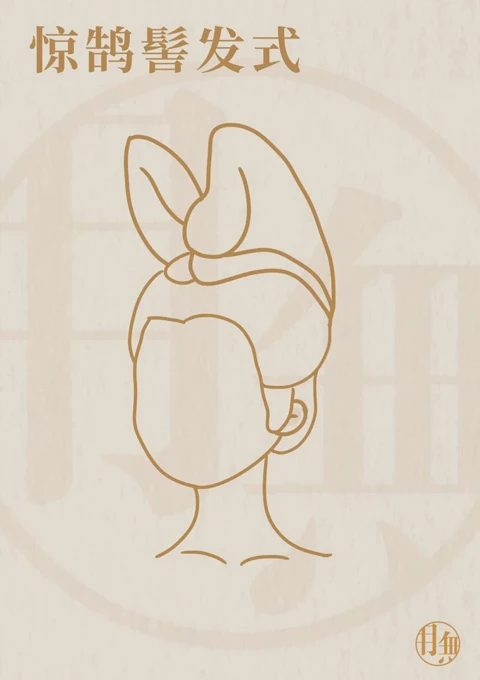
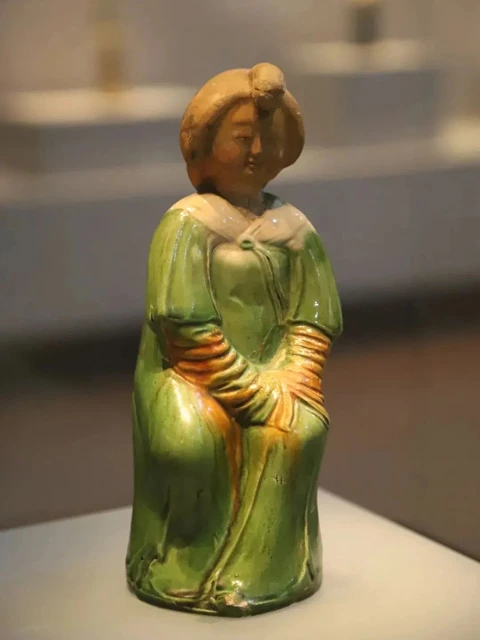
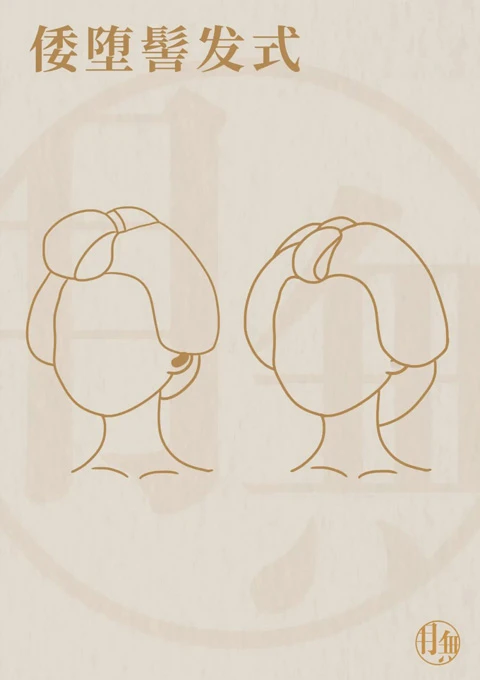
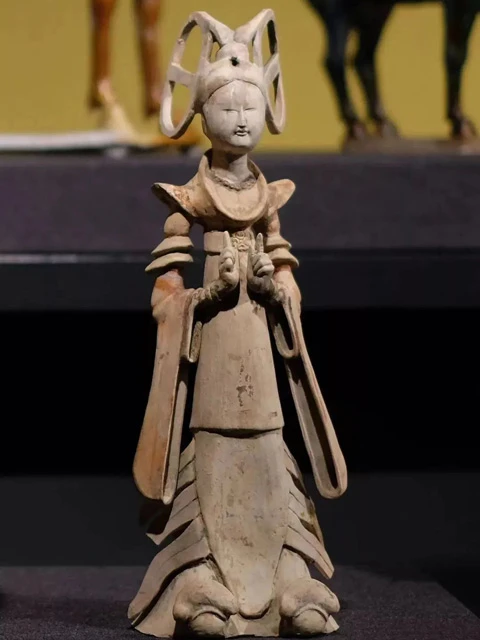
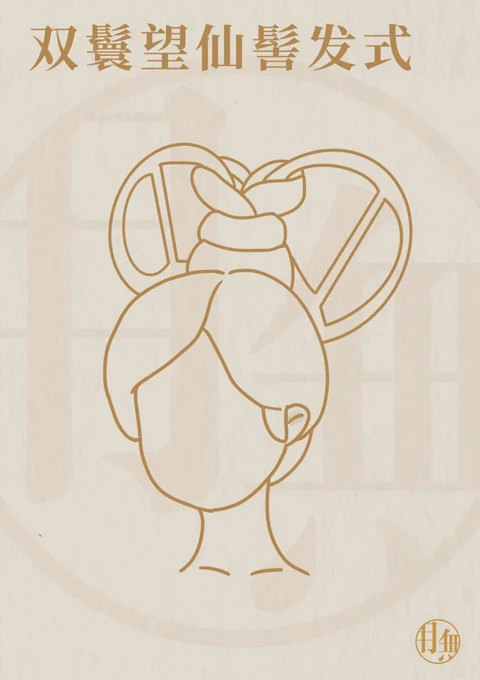
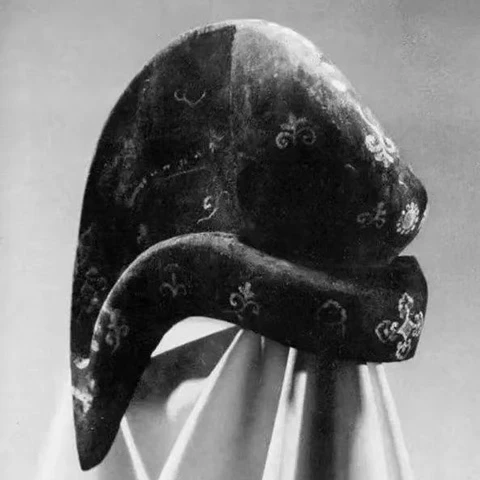
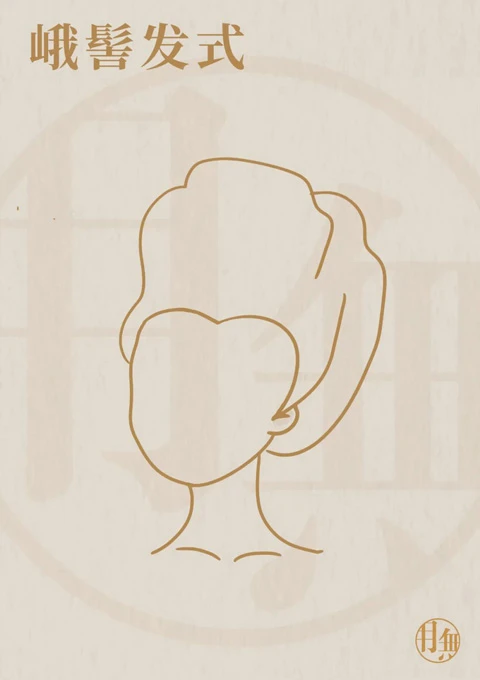
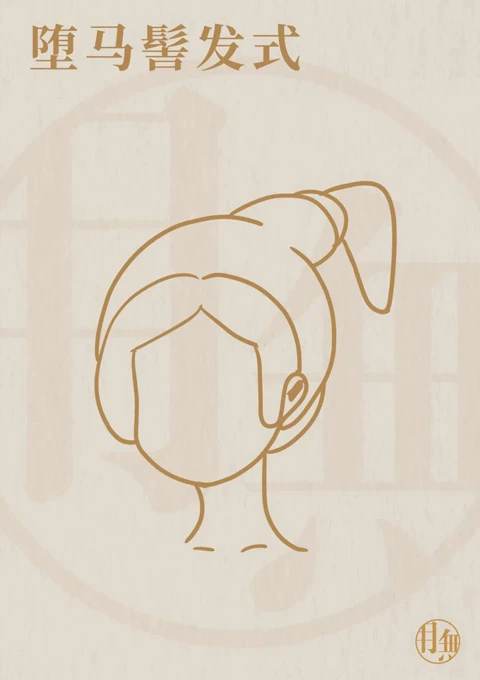
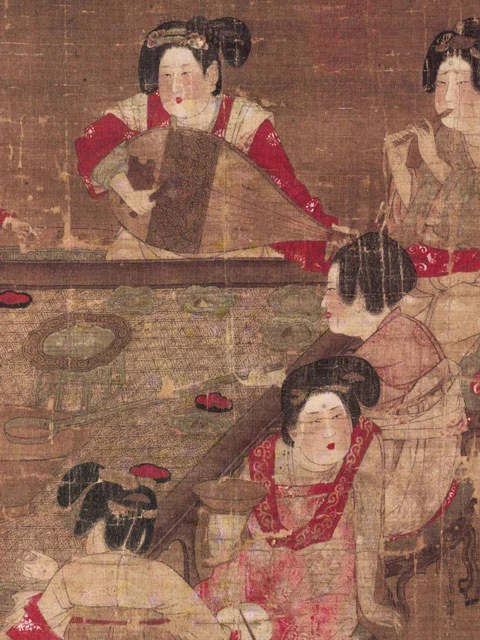
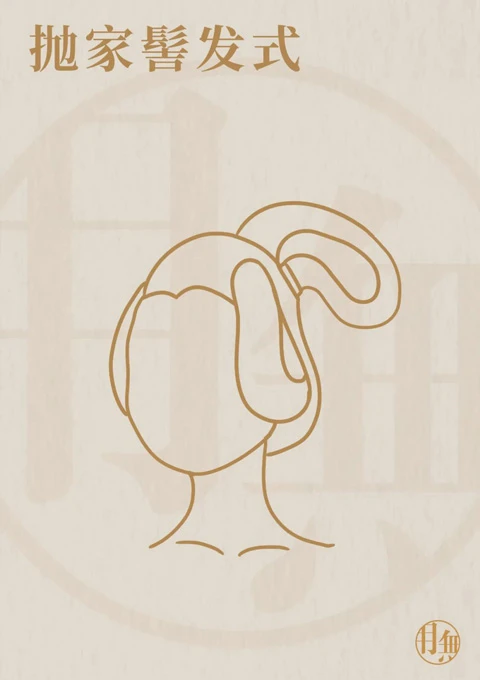

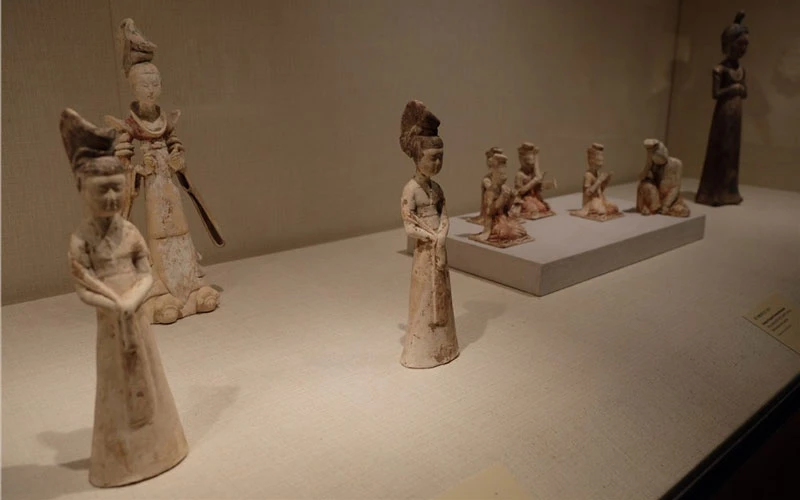
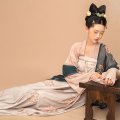

That's really cool to learn where the term "ya tou" comes from and why it's used only for young girls! My parents would sometimes tease me by calling me "xiao ya tou" as a child and while I knew the characters, I didn't know the origin of the phrase. Great article
Aku sangat kagum dengan gayanya, sungguh anggun, Padahal dizaman dulu.
Terkenal indah sejak jaman dulu